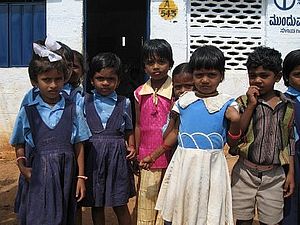According to the Ministry of Human Resource Development’s (MHRD’s) Input report, the draft of the New Education Policy (which is in the pipeline as discussed earlier) will aim to address seven key areas of concern with respect to the Indian education sector – access and participation, quality, equity, system efficiency, governance and management, research and development and financial commitment to education development. These will be addressed through policy interventions broadly into preschool and adolescent education, curriculum development and examination reform, teacher and faculty training, lifelong literacy, higher education and long distance learning. Here is a quick glance at the direction of reform in some of the identified areas of concern:
Access, Participation and Equity
The main issue in this realm can be characterized as very slow progress in reducing the number of non-literate people and a need to expand access to more early childhood education. States will be encouraged to ensure that the Right to Education Act is extended well enough to cover secondary education. Beyond this, expansion of open schooling facilities has been suggested in order to help drop-outs and working children who cannot find the space to attend formal schooling.
A National Fellowship Fund to support fees, material and living expenses for 1,000,000 students will be created to cater to economically weaker sections, with separate national talent scholarships in all subject areas for meritorious students. Linkages and mentorship systems between schools are also being developed. Further, an autonomous body to oversee Open and Distance Learning (ODL) as well as Massive Open Online Courses (MOOCs) will be set up to boost better access and participation and also be in charge of maintaining quality standards in this realm.
Under the aim of equity, curriculum reform is being undertaken with broad goals of ‘social cohesion, religious amity and national’ integration and will include teaching students their fundamental rights and duties in order to be responsible citizens. The curriculum will specifically cover issues of social justice (like gender, social, cultural and regional disparities) and their means of redressal but with an express emphasis also on ‘unity in diversity.’ The input draft also opens up the possibility of ‘alternate’ schools which offer interventions for particularly deprived children, like those migrating or under difficult circumstances.
Multilingual education will be offered at several levels to aid tribal students who lack familiarity in the regional language/language instruction. Current central funding will be augmented to identify and support students with special learning needs. This will be supported by dedicated research and development to strengthen disability studies in higher education and social and research audits of disability access.
Quality and System Efficiency
The aim here is to ensure that learning levels match expected learning levels and tackle deficiencies of educators, curriculum and pedagogy. At the preschool level this will involve priority programs for children in the age group of four to five years alongside the Ministry of Women and Child Development and training of cadres of pre-primary teachers at the State Government level. While a common national curriculum will be developed in science, mathematics and English, in other subjects there will be a partially common curriculum with the rest developed by individual states. More emphasis will be placed on practical components within science subjects from grade six upwards.
Concentrated efforts are being suggested to make Information and Communication Technologies (ICTs) an important part of the education cycle – from teaching methods, to record maintenance to monitoring and review mechanisms geared towards both teachers and students.
Teachers at all levels of school education will be given a thorough module covering child rights and the stipulations in place as well as what constitutes a violation as part of their training programs. This will be supplemented by self-learning online programs for students and parents on similar themes. Uniform norms for better learning outcomes will be applied to private and government schools alike. Beyond the upper primary stage, the current policy of ‘no-detention’ (not detaining students in a grade if they have not acquired adequate marks to advance) will be removed and instead be replaced with a policy of identifying weaker students and providing remedial instructions.
Academic aptitude tests and helplines with professional counselors have been floated with the idea of targeting students with special needs but also the larger student body in order to help identify areas of interest and potential. Procedural blocks that stand in the way of students migrating from one school to another will be done away with to ease mobility between schools.
The entire 43-page report has been made available for public comments until the end of the month. A separate section has been allocated to the issue of ‘Language and Culture in Education’ in addition to the identified areas of concern. This includes placing emphasis on both regional language as well as English, no matter what the school’s medium of instruction is. In addition to this however special importance has been accorded to the teaching of Sanskrit in schools and expansion of facilities for the same. Culture education now includes ‘ethics education’ – broadly centered around lessons of equality, equity, liberty, justice and national integration.
The complete policy along with a framework for implementation is expected in the upcoming months. Although an input draft cannot be expected to fully explain how each intervention will be implemented, several points that seem to call for greater efforts or more extensive research do not actually tell the reader what these efforts may be or to what extent they are determined by the government at center or at the state level – cases in point would be the inputs concerning gender discrimination and better support for students with disabilities.
While the input draft is extensive in the areas it addresses, it does not go into specifics in a lot of them – leaving the public to wait for the complete policy in order to know what forms many of the relatively more vague interventions will take.

































